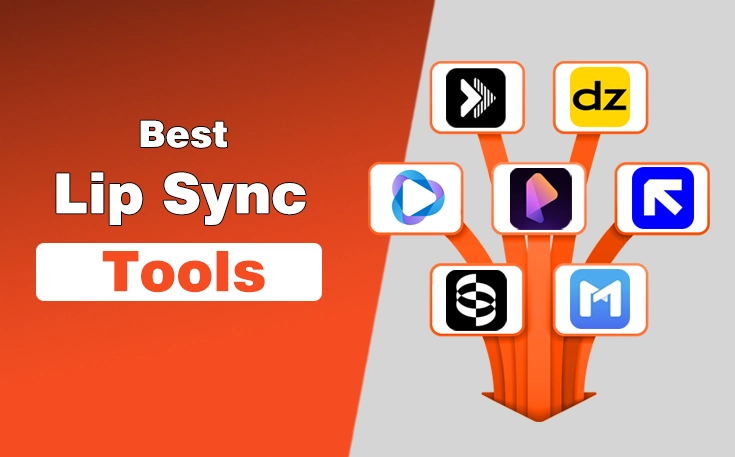I can’t count the number of times I have built a site that looked flawless in Chrome, only to open it in Safari or Firefox and find broken layouts, misaligned buttons, or scripts that refused to work. It was frustrating, and I knew I wasn’t alone. Every developer runs into these browser quirks sooner or later.
The problem is that with so many browsers and versions, manual testing quickly becomes overwhelming. That’s exactly why automated cross browser testing has become such a lifesaver. In this blog post, I will guide you through the biggest cross-browser testing challenges and how automation makes them manageable.
The Evolution of Cross-Browser Testing
In the early days of the internet, websites were relatively static, built with HTML and basic CSS. Testing meant opening a site in Internet Explorer and maybe Netscape Navigator. Compatibility checks were simple, though often frustrating because browsers followed different standards.
Fast forward to today, and websites are powered by advanced JavaScript frameworks, responsive design, APIs, and cloud-based services. Users expect seamless experiences across laptops, tablets, phones, and even smart TVs. This evolution means cross-browser testing has grown from a minor QA task into a mission-critical process for businesses.
Automation is the natural progression of this journey. Instead of human testers manually verifying every browser combination, automated tools replicate user interactions across environments at scale, delivering results in minutes rather than days.
Common Cross-Browser Testing Challenges And Their Automated Solutions
Challenge 1 – Rendering Inconsistencies
Every browser uses a unique rendering engine. Chrome relies on Blink, Firefox uses Gecko, Safari has WebKit, and Edge, though now Chromium-based, still differs in subtle ways. These engines interpret HTML, CSS, and JavaScript differently. A perfectly aligned flexbox in Chrome may collapse in Safari, while font rendering can vary widely.
Automated Solution
Automation tools run regression tests across multiple browsers simultaneously, capturing screenshots and comparing layouts pixel by pixel. This highlights inconsistencies early, allowing teams to fix issues before release. Visual regression automation ensures design fidelity across platforms.
Challenge 2 – Limited Browser and Device Coverage
The combination of operating systems, browser versions, and devices creates an almost infinite testing matrix. Manually covering all these combinations is expensive and impractical.
Automated Solution
Automation integrates with cloud platforms that host hundreds of browser and device environments. QA teams can run test suites across these environments without maintaining costly in-house labs. Parallel execution makes it possible to achieve coverage at scale without slowing down release cycles.
Challenge 3 – Time Consuming Manual Testing
Manual testing requires repetitive execution of test cases across multiple browsers. This slows down development pipelines and drains team productivity.
Automated Solution
Automation frameworks execute scripts simultaneously across browsers. What might take a team of testers several days can be completed in a few hours. This allows organizations to keep up with agile sprints and CI/CD release cycles.
Challenge 4 – Dynamic and Interactive Content
Modern applications rely heavily on JavaScript frameworks such as React, Angular, and Vue. These frameworks use dynamic rendering, AJAX calls, and client-side logic that may behave differently in browsers.
Automated Solution
Automation tools can handle asynchronous events, wait for elements, and validate dynamic content. AI-powered frameworks even adapt to UI changes, ensuring tests remain stable when applications evolve.
Challenge 5: Browser Version Updates
Browsers frequently update to improve security and performance. These updates sometimes introduce breaking changes that affect layouts, scripts, or APIs.
Automated Solution
Automated suites can be rerun instantly on updated browser versions available through cloud grids. This provides early alerts about compatibility issues, reducing risks of production failures.
Challenge 6: Responsive and Mobile Design Validation
Responsive design is essential for modern websites, but testing across different screen sizes and orientations adds complexity.
Automated Solution
Automated tools simulate screen resolutions, orientations, and devices, verifying responsive behavior. Automation ensures menus, layouts, and interactive elements work consistently across mobile, tablet, and desktop devices.
Challenge 7: Collaboration and Reporting Gaps
Manual testing often lacks centralized reporting. Teams waste time recreating issues or miscommunicating test results.
Automated Solution
Automation generates structured reports with screenshots, logs, and error details. These can be shared across QA, development, and product teams. Integration with project management tools enhances collaboration and accelerates defect resolution.
Manual vs Automated Cross-Browser Testing
While manual testing still plays a role in exploratory validation, it cannot keep up with the demands of modern web development. Automated testing offers clear advantages:
- Speed: Automation runs tests in parallel across browsers.
- Accuracy: Removes human error from repetitive checks.
- Scalability: Expands testing across many environments simultaneously.
- Cost savings: Reduces dependency on large manual QA teams.
In addition, automated testing enables continuous integration by ensuring every code commit is validated against critical user flows across different browsers. It drastically reduces the risk of last-minute surprises before deployment.
However, manual testing still provides value in areas where human intuition and creativity are required, such as usability checks, design aesthetics, and edge case scenarios that are difficult to script.
The best testing strategies embrace a hybrid approach, leveraging the precision and efficiency of automation alongside the adaptability of manual testers to achieve both speed and quality at scale.
Best Practices for Successful Automation Adoption
- Define a Browser Matrix: Focus on the most commonly used browsers among your audience using analytics data. This ensures your testing aligns with actual user behavior rather than wasting resources on rarely used combinations.
- Start Small: Begin with critical user flows like login, checkout, or form submission. Once these are stable, gradually expand test coverage to secondary features, which helps prevent scope creep.
- Use Cloud Grids: Avoid the cost of maintaining physical devices by using cloud-based testing platforms. These solutions provide scalability and quick access to new browser versions without hardware investment.
- Integrate with CI/CD: Ensure automated tests run as part of every build and deployment. This shift-left approach catches issues early, reducing the cost and time of fixing defects.
- Regularly Update Test Scripts: Adapt to UI and framework changes to avoid flaky tests. A maintenance schedule ensures scripts remain accurate and trustworthy.
- Combine Visual and Functional Tests: Cover both appearance and functionality for complete validation. Visual regression testing can catch subtle layout shifts while functional scripts guarantee workflows remain intact.
- Foster Collaboration: Encourage developers, testers, and product owners to collaborate on automation strategy. This alignment helps prioritize tests that bring the most business value and avoid redundant efforts.
Future Trends in Cross-Browser Testing
The future of cross-browser testing lies in greater intelligence and adaptability:
- AI-Powered Testing: Tools will use machine learning to self-heal broken locators and predict high-risk areas. AI can also identify patterns in defects, helping teams proactively fix recurring issues before they spread.
- Shift-Left Testing: Developers will run automated tests earlier in the pipeline, catching issues sooner. This prevents bugs from accumulating and reduces the cost of late-stage fixes.
- Cloud-Native Testing: Platforms will expand their coverage of emerging devices, including smart TVs, IoT browsers, and even automotive systems with built-in web interfaces.
- Accessibility Automation: Ensuring compliance with accessibility standards will become a core part of cross-browser testing. Automated tools will check for WCAG compliance, keyboard navigation, and screen reader compatibility.
- Predictive Analytics: Testing platforms will use historical data to prioritize tests, reducing time while maximizing coverage. This trend also includes adaptive testing, where platforms dynamically adjust scope based on risk and impact analysis.
As these innovations mature, organizations will be able to deliver faster, smarter, and more inclusive testing strategies that align with the pace of digital transformation.
Final Thoughts
Cross-browser testing is inherently complex, but automation transforms it from a burden into an advantage. When you address rendering inconsistencies, scale device coverage, speed up repetitive checks, and support responsive validation, automation empowers organizations to deliver reliable, user-friendly applications.
The combination of automation, analytics, and best practices ensures that teams can meet user expectations while staying agile and competitive. Investing in automated cross-browser testing today means building digital experiences that remain consistent, scalable, and future-ready.
Need custom app with amazing features?
Get a Quote




